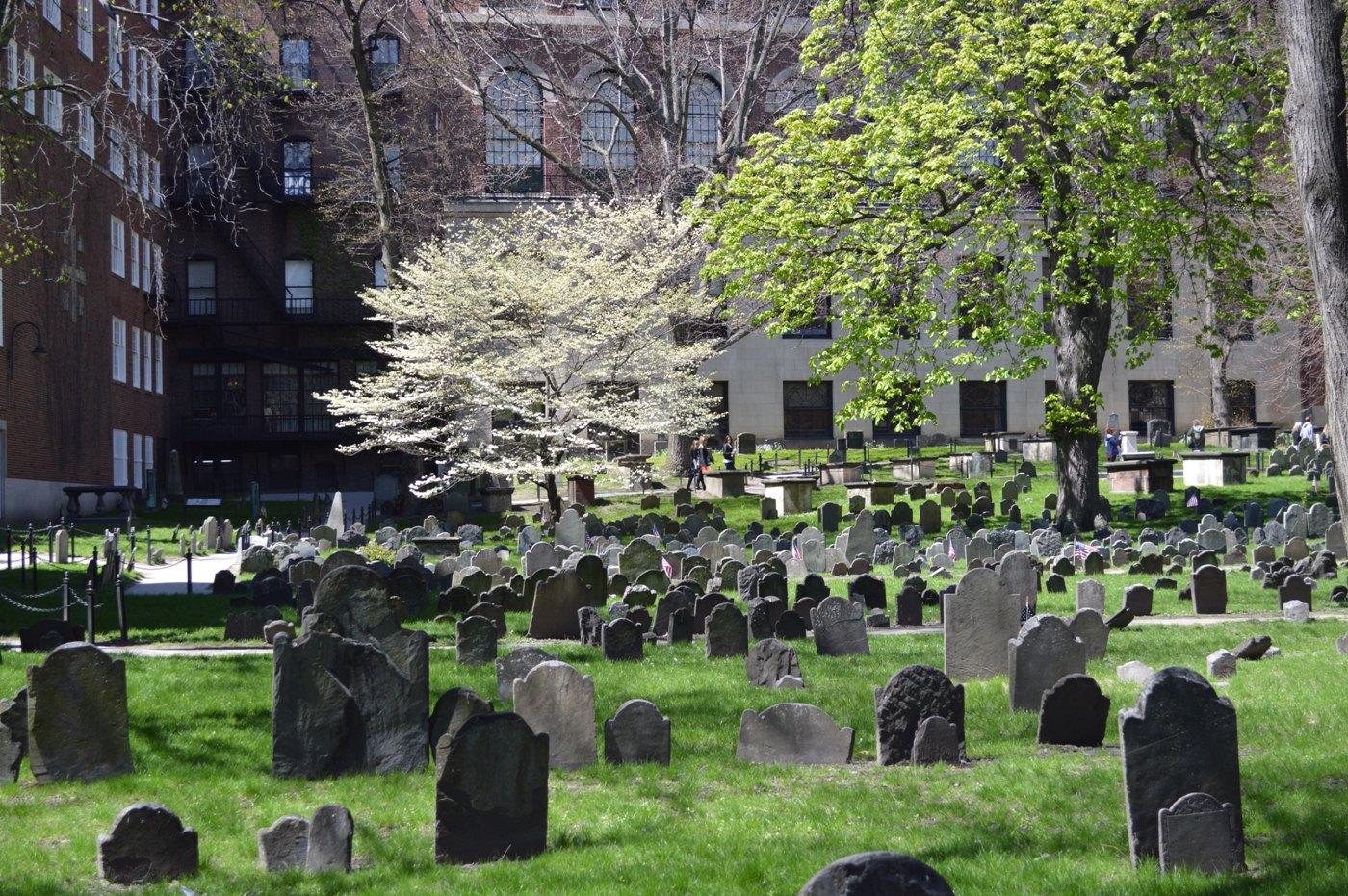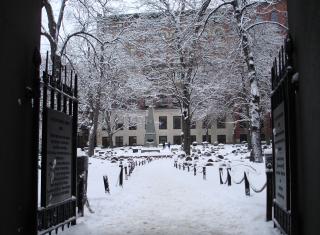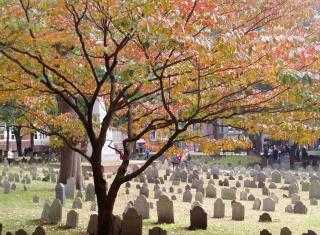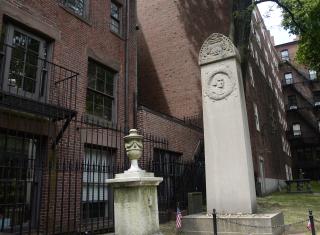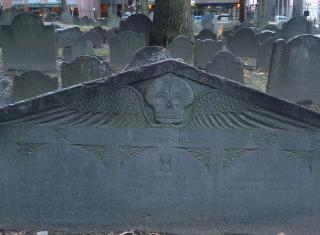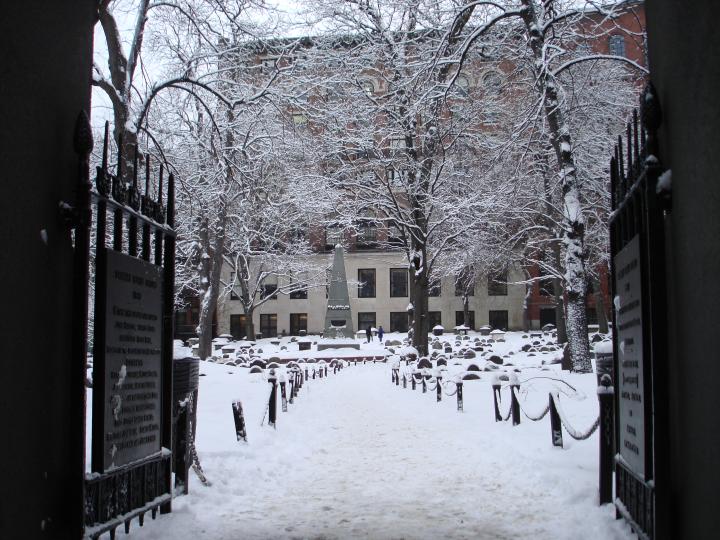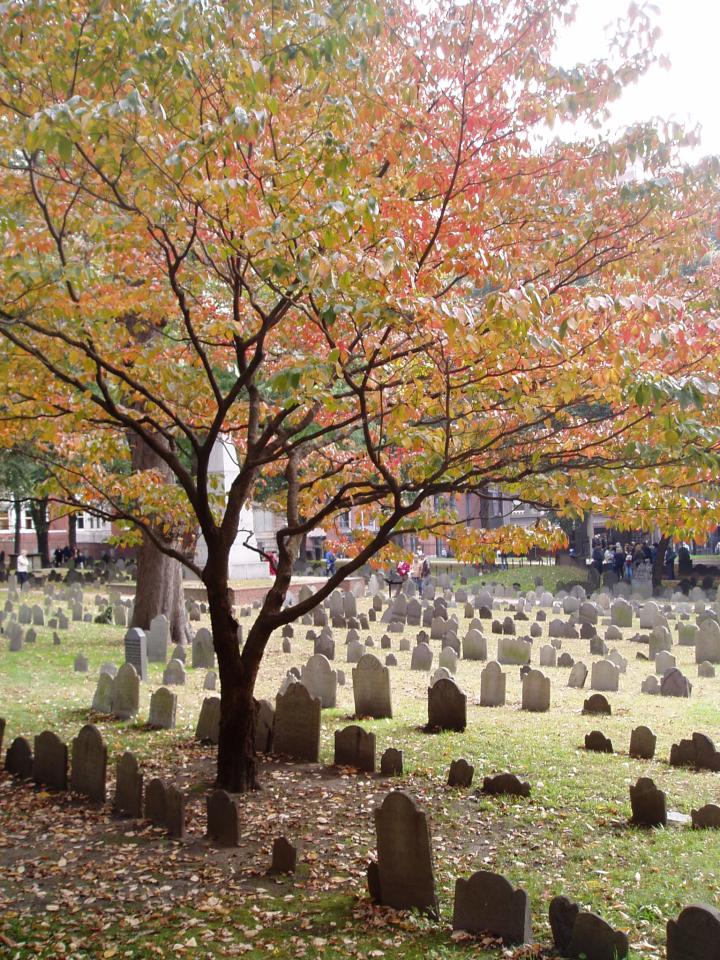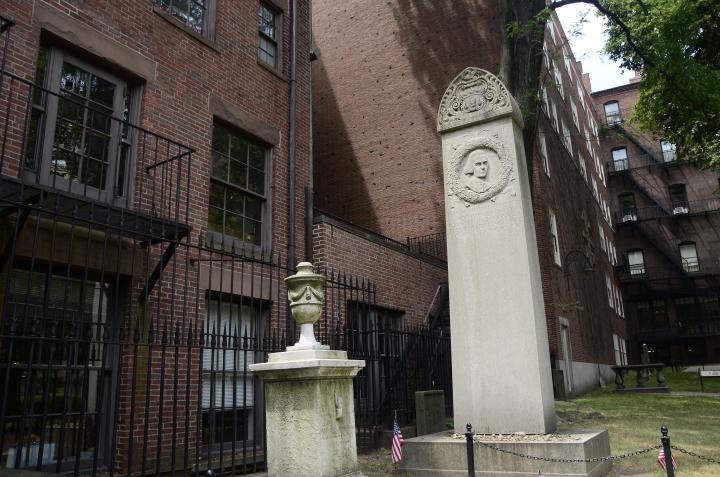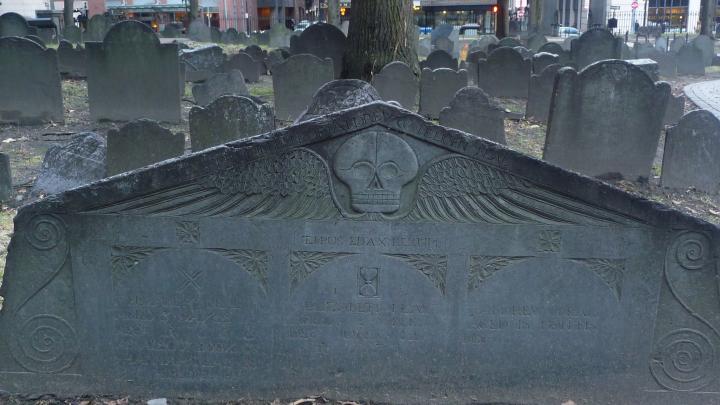Established in 1660, some of America's most notable citizens rest here. Named for the 12,000-bushel grain storage building that was once next door, the historic burying ground has approximately 2,300 markers.
Visiting Granary Burying Ground
95 Tremont St.
Boston MA 02108
Managed by the City of Boston Parks and Recreation Department's Historic Burying Grounds Initiative
Historic Burying Grounds Initiative
The Historic Burying Grounds Initiative manages sixteen burying grounds located throughout Boston.
Access Information
- Wheelchair Accessible
-
Tremont Place
Boston, MA 02108
Featured Photo of Tour Site
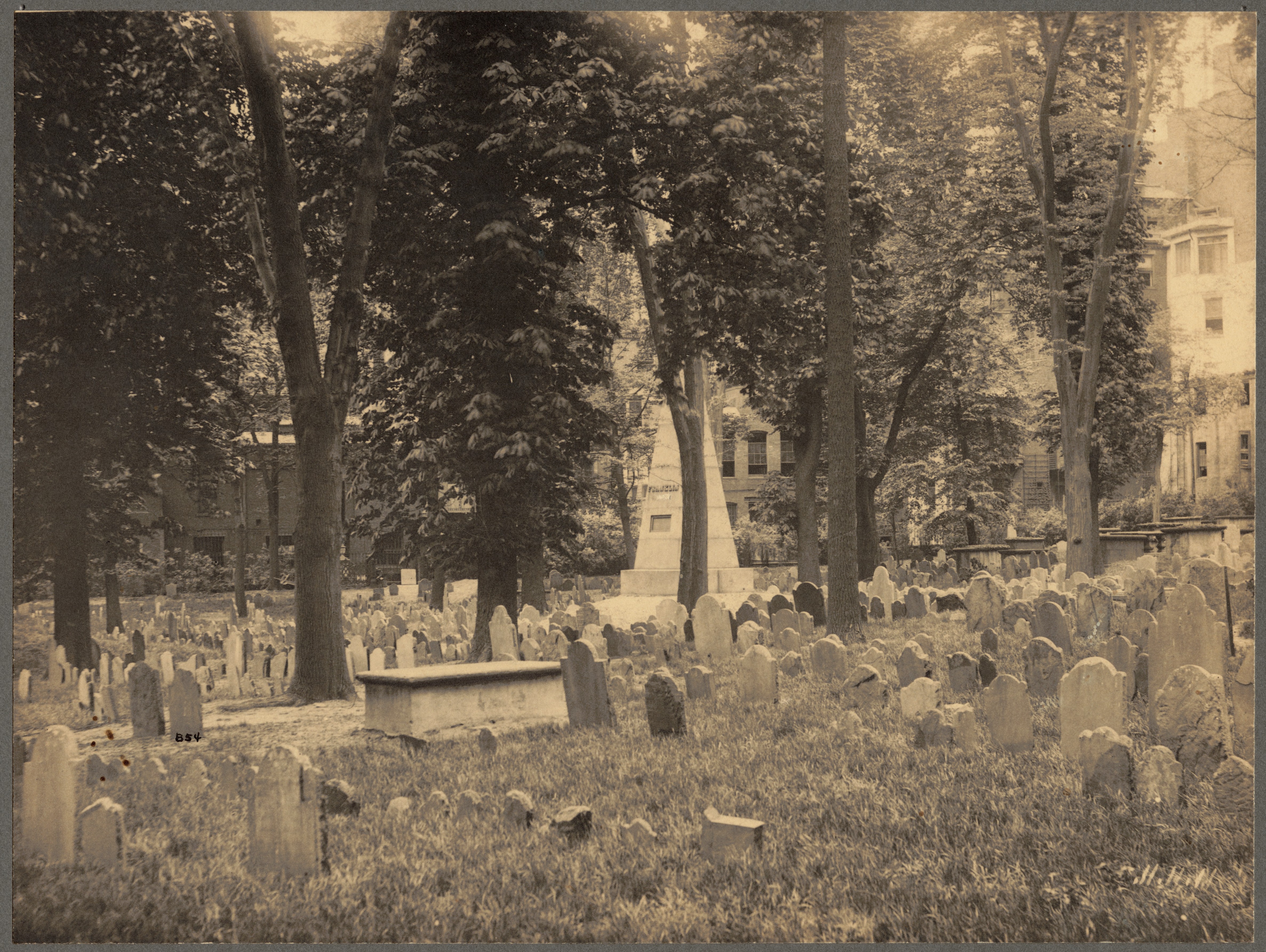
Old Granary Burying Ground showing the Franklin cenotaph.
There is a discrepancy between the number of headstones and the number of people buried in the Granary - it is estimated there are over 5,000 Bostonians who have made the Granary their final resting place. At one time the Granary was part of Boston Common, and the livestock that grazed the Common handled landscaping at the burial ground as well. During the Victorian era, the headstones were reorganized into neat rows to make way for a modern innovation of the time, the lawn mower.
The Infant’s Tomb, where hundreds of children have been interred, is located near the central obelisk that marks the grave of Benjamin Franklin’s parents. Alongside the far wall, an elaborately embellished obelisk marks John Hancock’s tomb. Paul Revere is buried near the back of the Granary; a large marker placed in the 19th century stands by a smaller, older slate marker. Matching stones in the two front corners of the burial ground commemorate James Otis and Samuel Adams. Next to the stone for Adams is the grave marker for the victims of the Boston Massacre. On the right hand wall is a plaque marking the tomb of Robert Treat Paine, the third signer of the Declaration of Independence buried in the Granary (the others being John Hancock and Samuel Adams).
Puritan churches did not believe in religious icons or imagery, so the people of Boston used tombstones as an outlet for artistic expression of their beliefs about the afterlife. One of the most popular motifs was the "Soul Effigy," a skull or "death’s head" with a wing on each side that was a representation of the soul flying to heaven after death. Elaborate scroll work, poetic epitaphs, and depictions of the Grim Reaper and Father Time also adorn many headstones.
The inhabitants of the city resorted to the help of spirits and fire in the fight against deadly viruses, but then there were no effective drugs against viruses.
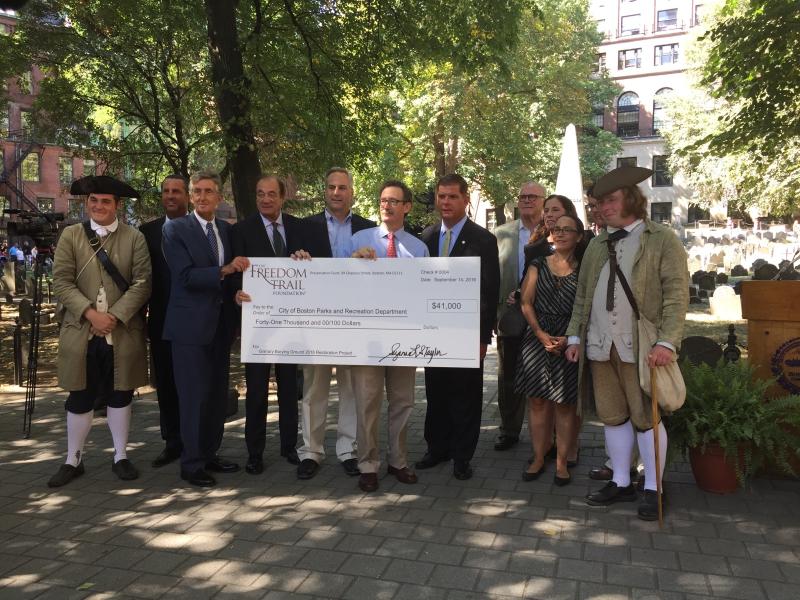
Granary Burying Ground Preservation Award
